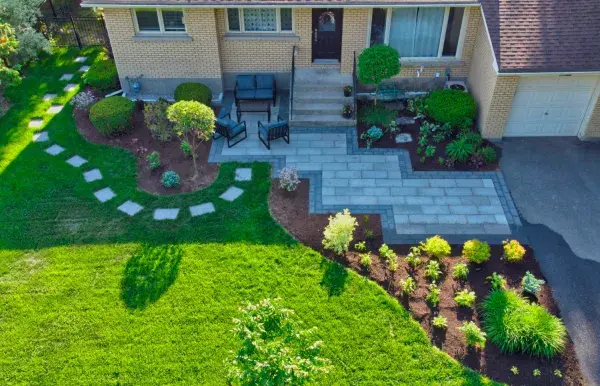
As urbanization continues to spread, the need for efficient and sustainable landscaping practices has never been more imperative.
One particular area that has gained significant attention is the development of drought-tolerant front yard landscaping. This approach not only champions the aesthetic appeal of your home but also promotes water conservation, a resource that is becoming more precious with each passing day.
Utilizing drought-tolerant plants and efficient irrigation techniques, homeowners can create a thriving, beautiful landscape that requires minimal water usage.
This discussion aims to provide a comprehensive understanding of this landscaping practice, its benefits, and how it can be achieved.
Stay with us as we explore this compelling topic in depth.
Choosing Drought-Tolerant Plants
When embarking on the path to a drought-tolerant landscape, the first and arguably most important step is to carefully select plants that are well-adapted to survive in arid conditions without sacrificing aesthetic appeal. This involves researching and choosing flora that naturally thrive in low-water environments.
Succulents, for instance, store water in their leaves, making them ideal for drought-prone areas. Ornamental grasses, with their extensive root systems, can also withstand dry conditions. Native plants, too, are highly recommended as they are already acclimated to the local climate.
It’s important to note that these plants not only survive, but also add texture, color, and interest to the landscape, thereby enhancing the overall appearance of the yard.
Efficient Irrigation Techniques
Implementing efficient irrigation techniques is a crucial part of maintaining a drought-tolerant landscape. It ensures that every drop of water is used effectively and minimizes wastage.
Drip irrigation systems are one example of efficient techniques. They deliver water directly to plant roots, reducing evaporation and runoff. These systems can be coupled with smart controllers that adjust watering based on weather conditions and soil moisture levels.
Another efficient technique is rainwater harvesting. This involves collecting and storing rainwater for later use. It not only conserves water but also reduces dependence on municipal water supply.
Lastly, grouping plants with similar water needs together, known as hydrozoning, can optimize water usage. By placing plants with high water requirements together and those with low water requirements separately, you can ensure that each group receives the appropriate amount of water.
These techniques can significantly enhance the sustainability and resilience of your landscape.
Conclusion
In conclusion, a drought-tolerant front yard landscape is not only a sustainable choice but also a visually appealing one.
Adopting efficient irrigation techniques and using drought-resistant plants can lead to an impressive reduction of up to 60% in water usage.
This marriage of aesthetic satisfaction and environmental responsibility is a compelling argument for the adoption of drought-tolerant landscaping in residential areas.
Read More:
